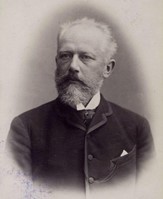
- This event has passed.
Countdown 3… Gersen
October 5, 2024 @ 7:30 pm - 9:30 pm

GBS begins its 79th Season continuing the search for a new Music Director with the second of four candidates*: Joshua Gersen.
Mr. Gersen is definitely the most local of candidates, having grown up in Monroe, performing with GCTYO (formerly the Greater Bridgeport Youth Orchestras) and conducting for them at age 11. This is not his first time on the GBS podium; Maestro Gustav Meier invited him to conduct at age 16, Later in his storied career, he became Music Director of the New York Youth Symphony.
Mr. Gersen recently concluded his tenure as Assistant Conductor of the New York Philharmonic. The New York Times calls his conducting “Impassioned and incisive; the performance earned a standing ovation and prolonged applause from his colleagues in the orchestra.”
The concert program will center around Tchaikovsky’s Symphony No. 4, Mozart’s Symphony No. 40 in G minor and will include a modern work by Carlos Simon: Fate Now Conquers.
Click here then click “Subscriptions” for subscriptions at deep discounts.
This season, all kids under 19 years old will be admitted FREE when accompanied by an adult; accompanying adults will get 15% off their single ticket prices. Please note that our concerts will begin one half hour earlier this season, at 7:30 PM.
PROGRAM NOTES
October 5, 2024
Joshua Gersen, conductor
Fate Now Conquers Carlos Simon (b. 1986)
Symphony No. 40 in G minor, K. 550 Wolfgang Amadeus Mozart (1756-1791)
Molto allegro
Andante
Menuetto. Allegretto
Finale. Allegro assai
-Intermission-
Symphony No. 4 in F minor Peter Ilyich Tchaikovsky (1840-1893)
Andante sostenuto
Andantino in modo di canzona
Scherzo: Pizzicato ostinato
Finale: Allegro con fuoco
Simon, Fate Now Conquers
American composer Carlos Simon, a native of Atlanta, Georgia, is currently Composer-in-Residence at the Kennedy Center in Washington, D.C. His widely performed Fate Now Conquers was commissioned in 2019 by the Philadelphia Orchestra and premiered online in 2020 due to the pandemic. In notes by the composer himself, he attributes the title to a quote from The Iliad in one of Beethoven’s notebooks:
This piece was inspired by a journal entry from Ludwig van Beethoven’s notebook written in 1815:
“Iliad. The Twenty-Second Book
But Fate now conquers; I am hers; and yet not she shall share
In my renown; that life is left to every noble spirit
And that some great deed shall beget that all lives shall inherit.”
Using the beautifully fluid harmonic structure of the 2nd movement of Beethoven’s 7th symphony, I have composed musical gestures that are representative of the unpredictable ways of fate. Jolting stabs, coupled with an agitated groove with every persona. Frenzied arpeggios in the strings that morph into an ambiguous cloud of free-flowing running passages depict the uncertainty of life that hovers over us.
We know that Beethoven strived to overcome many obstacles in his life and documented his aspirations to prevail, despite his ailments. Whatever the specific reason for including this particularly profound passage from the Iliad, in the end, it seems that Beethoven relinquished to fate. Fate now conquers. -Carlos Simon

Mozart, Symphony No. 40, K. 550
The second of Mozart’s three last, path-breaking symphonies written in the summer of 1788, No. 40 in G minor is perhaps one of the best-known of all symphonies. Composed during a time of financial and personal stress, the relatively unusual minor tonality itself announces a seriousness and intensity of purpose. The first movement is a perennial favorite of music theory and appreciation analysis because of its clear-cut adherence to the outline of sonata form: the major divisions of exposition, development, and recapitulation, with easily recognizable themes, transitions, and closings. Yet the working-out of themes, harmonies and motives is anything but simplistic.
The second movement contrasts with the first in its major key, lyrical melodies marked by the stylized “sigh” figure. We hear gently pulsing strings, dissonances that resolve, and dialogue of strings and winds.
Next comes a conventional minuet-trio movement, but in a non-traditional minor key and with unsettling, syncopated accents on weak beats. A relaxed, lyrical trio section contrasts in the parallel major key, providing a break from the intensity of the minuet.
The fourth movement balances the first in minor-key seriousness, which gives way to a gentle, major-key second theme. The development works the main theme through new harmonies and in counterpoint. With the return of the second theme in the minor tonic, the symphony concludes in a resounding statement of G minor. Does the grim intensity of this symphony reflect Mozart’s state of mind during a troubled period? Does it point the way toward the deeper personal expression that would become a guiding force in the Romantic era? We may presume see this work as Mozart’s wrestling with Fate at a difficult point in his life.

Tchaikovsky, Symphony No. 4
Tchaikovsky’s Fourth Symphony displays both sides of the supposedly rival currents in 19th-century Russian music: on the one hand, allegiance to the Western European symphonic tradition as cultivated at the St. Petersburg and Moscow conservatories, and on the other, a love for Russian folk music. Composed during 1877-78, this was a time when Tchaikovsky was struggling with deep personal sadness over his sexual orientation, exacerbated by a brief, disastrous marriage. Finding security in the distanced, epistolary relationship with his patron, Nadezhda von Meck, he wrote to her of the concepts underpinning his newest symphony: “The introduction is the seed of the whole symphony, undoubtedly the central theme. This is Fate, i.e., that fateful force which prevents the impulse to happiness from entirely achieving its goal, forever on jealous guard lest peace and well-being should ever be attained in complete and unclouded form, hanging above us like the Sword of Damocles, constantly and unremittingly poisoning the soul. Its force is invisible and can never be overcome. Our only choice is to surrender to it, and to languish fruitlessly.”
Indeed, the opening “Fate” motive is unforgettable and relentless, punctuating the first movement and recurring in the fourth movement as well. The first movement continues beyond the fate motive, marked with a waltz tempo, but the jittery, highly syncopated theme is anything but a smooth and elegant waltz for dancing. A contrasting idea moves among the woodwinds, bringing some relief to the intensity of the waltz, complemented by gentle strings, but the brightness is overshadowed by the return of the fate theme.
In the second movement a haunting minor melody is passed among winds and strings, continuing the mood of melancholy in a more subdued way.
The third movement, a scherzo, lightens the mood with a study in timbres, starting with lively pizzicato strings, followed by contrasting sections for woodwind and brass choirs before returning to the strings. A short coda gives the different choirs one last dialogue with each other.
The finale opens with a burst of optimistic-sounding high energy before introducing the theme of The Birch Tree. The folk tune undergoes several transformations, heading toward a climax that is wrenched away by the thunderous Fate theme. A return of the opening idea, layered with fragments of the Birch Tree, races headlong to a joyful conclusion. Has Fate had the last word, or not?
Alice M. Caldwell PhD
